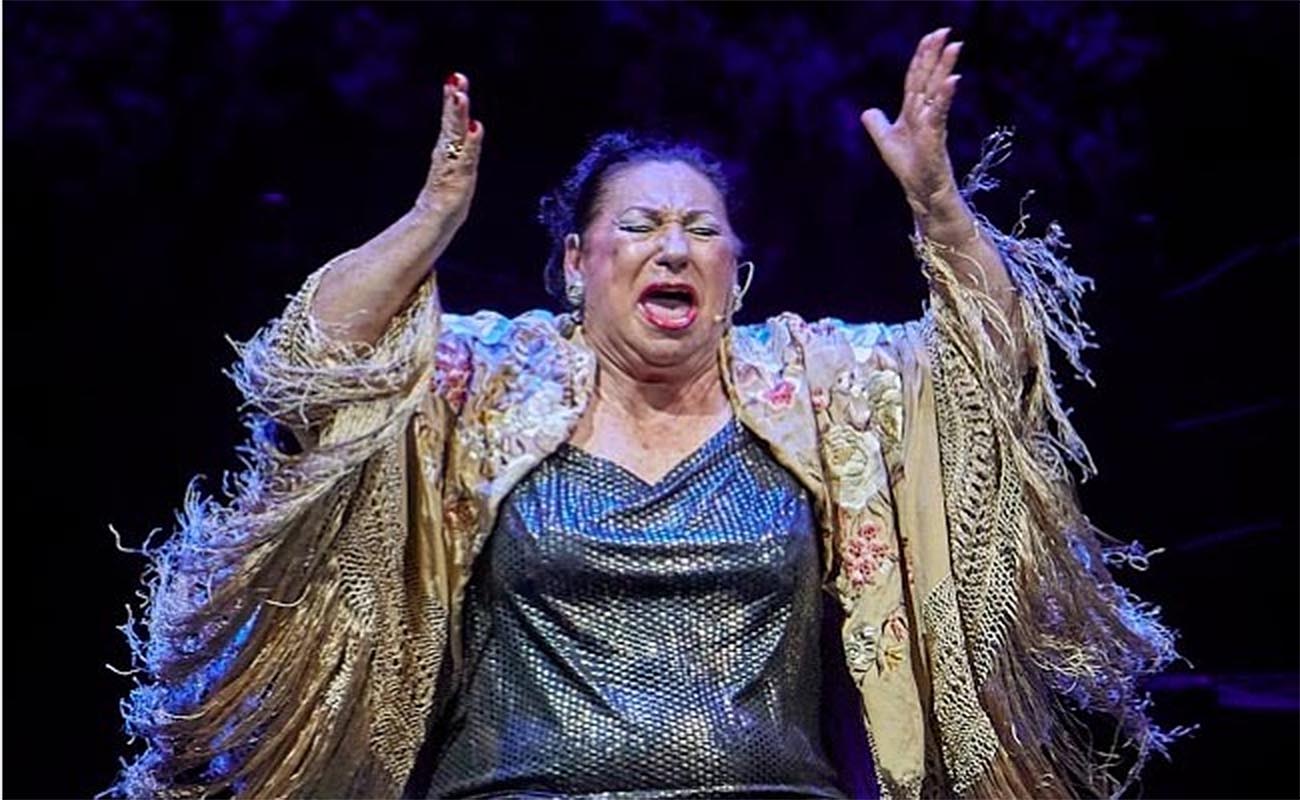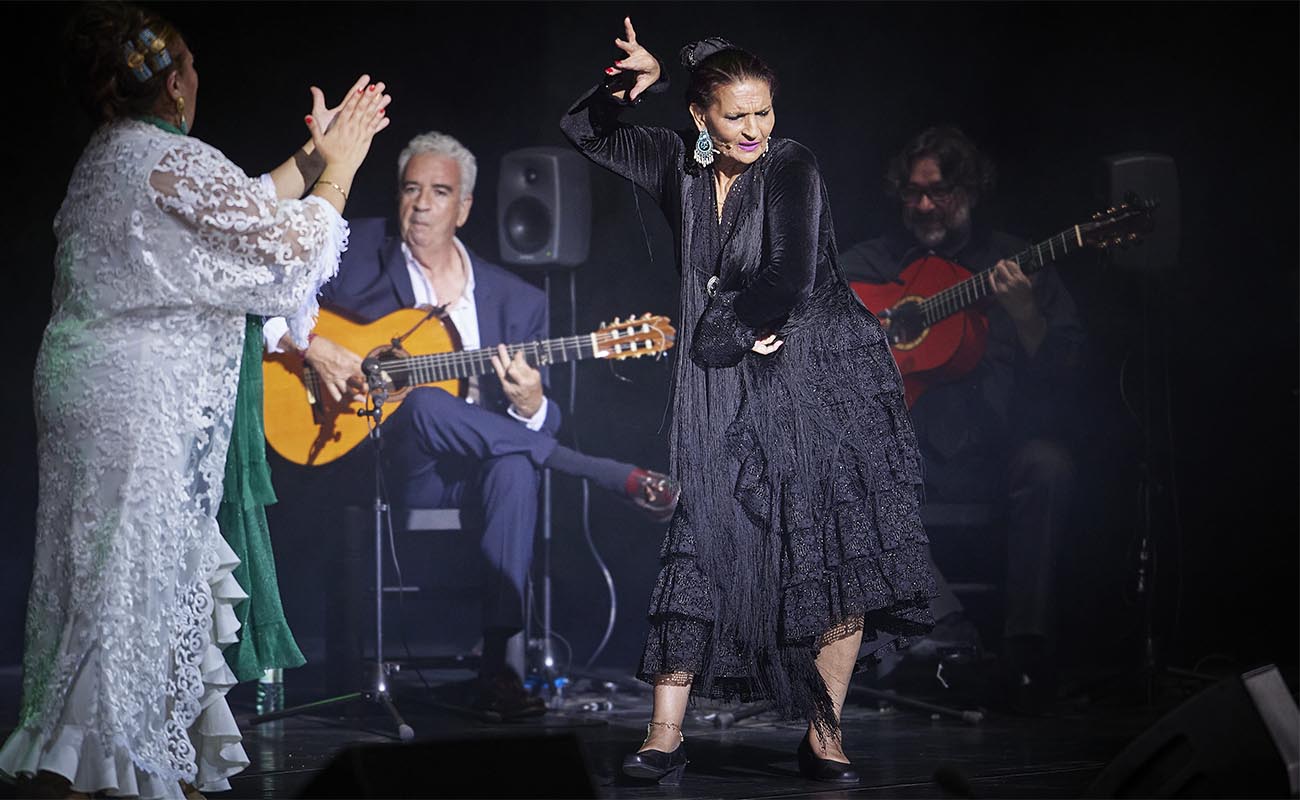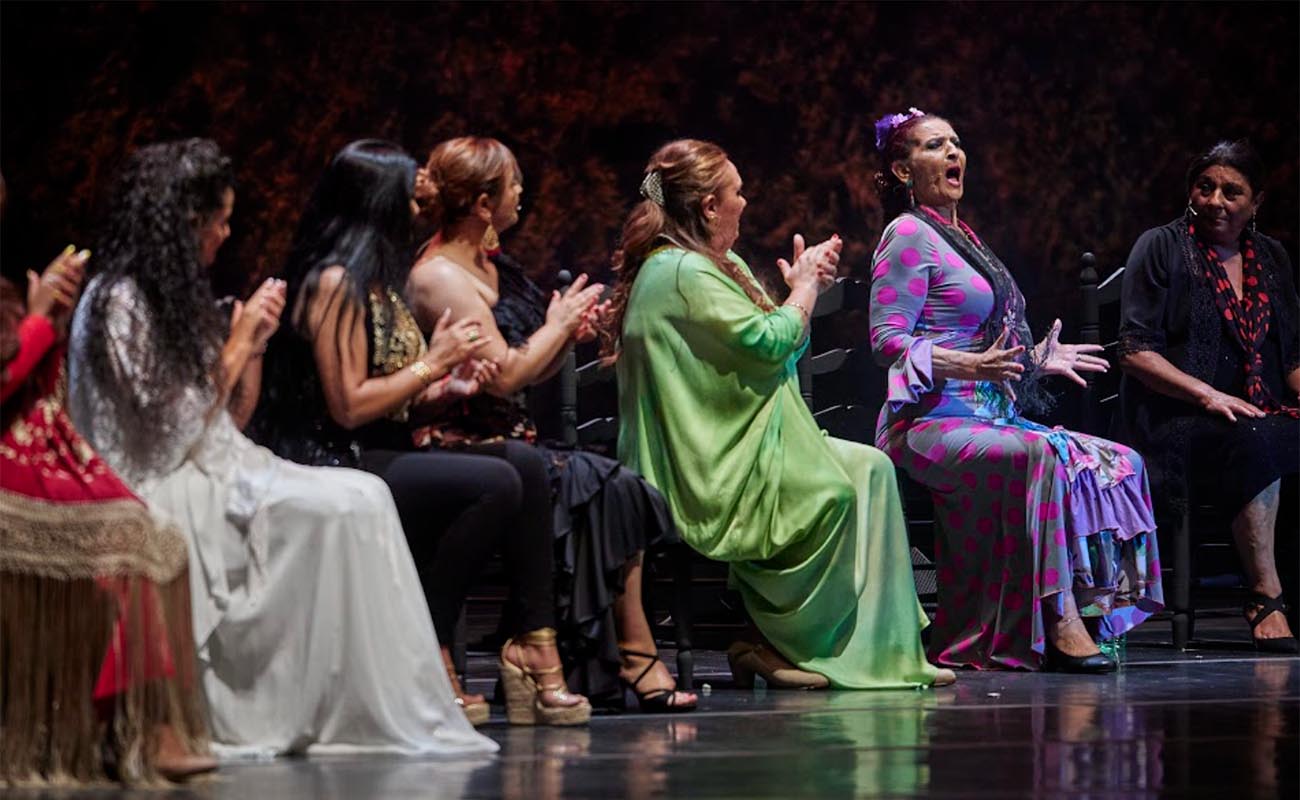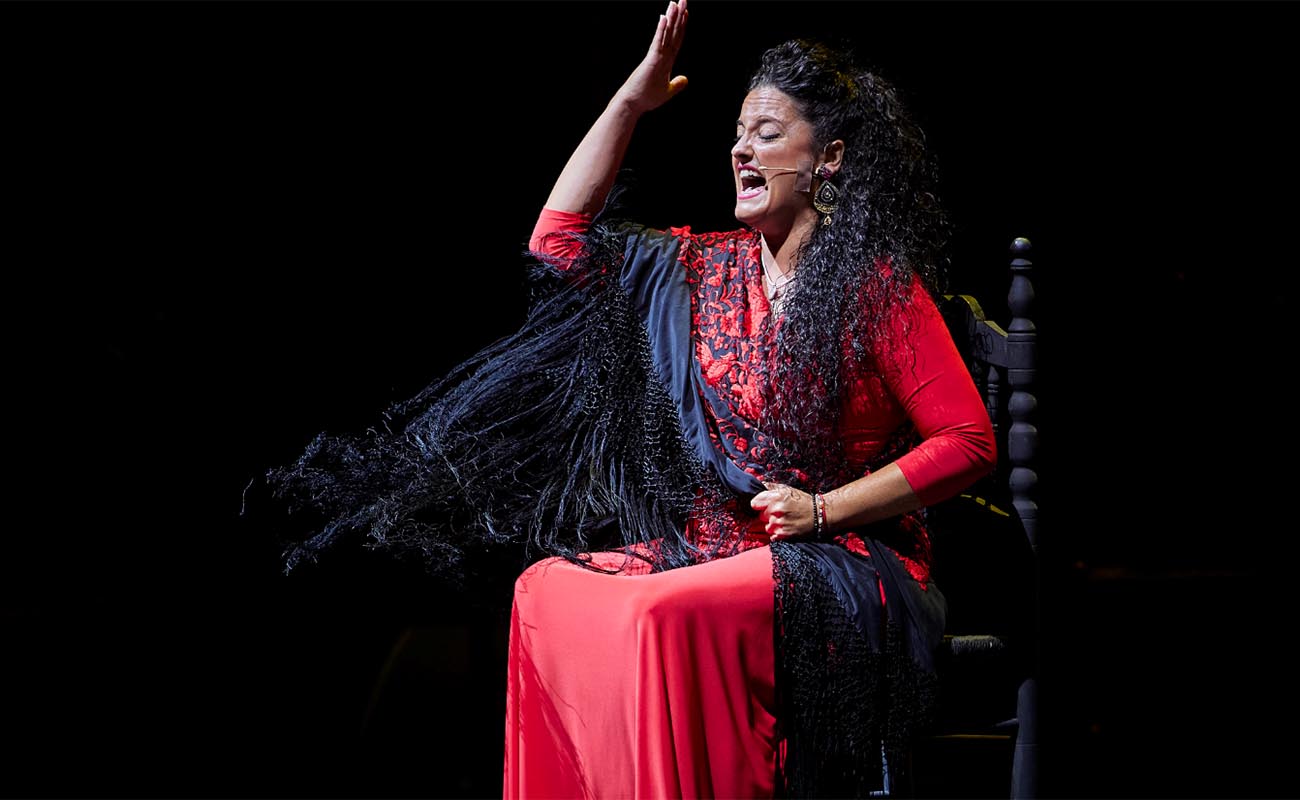Gala Andalucía Flamenca, ‘Cantes de Mujer’
Deep down inside, in the heart of hearts of most of the world’s inhabitants, the city of Granada represents the most pungent essence of flamenco. In fact, it’s common to meet non-Spanish flamenco fans who travel to the city expecting to find the absolute mecca of the genre.
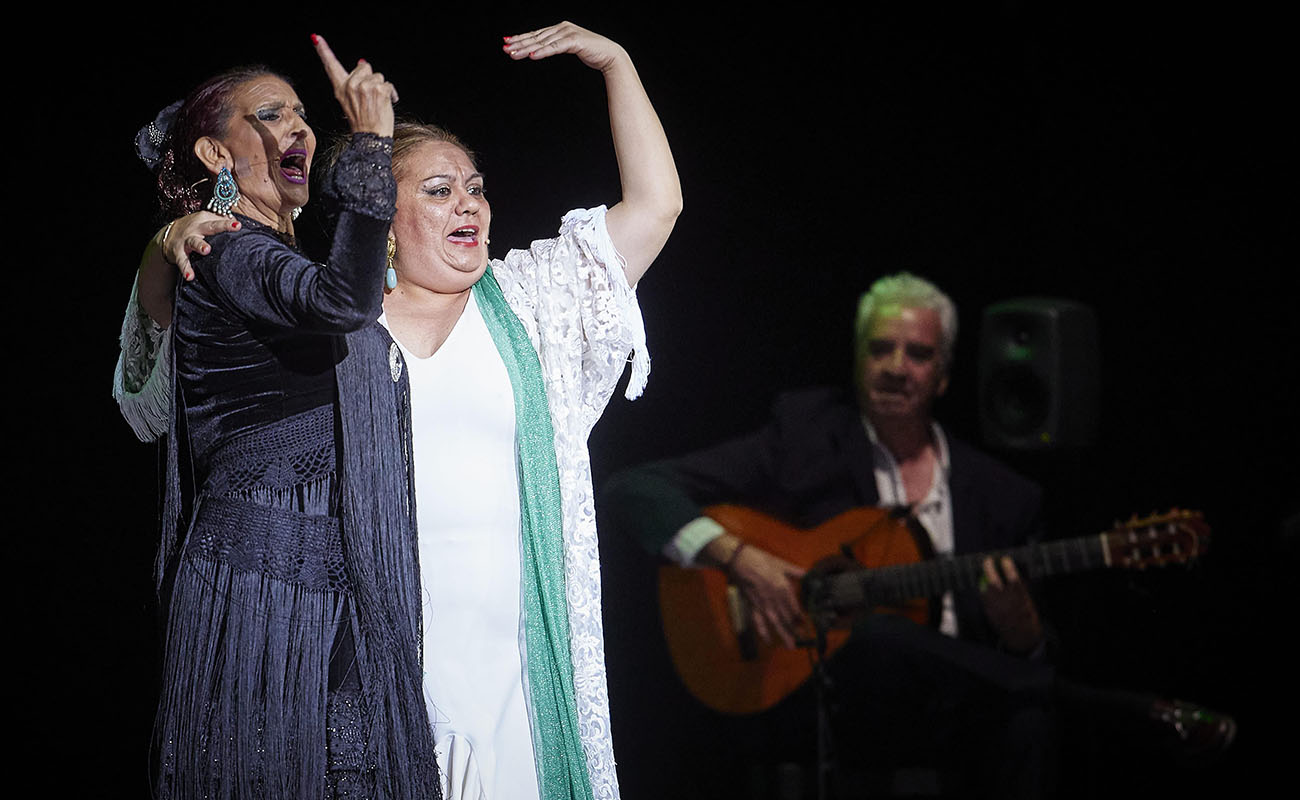
Deep down inside, in the heart of hearts of most of the world’s inhabitants, the city of Granada represents the most pungent essence of flamenco. In fact, it’s common to meet non-Spanish flamenco fans who travel to the city expecting to find the absolute mecca of the genre. At one time, the great dancer Carmen Amaya claimed to have been born here. The centuries-long Arab presence, the ancient narrow streets, tea-shops and spice vendors wedged between souvenir stands and hawkers, and of course, the sheik’s impossible dream made reality and known as the Alhambra, are all dots that connect to construct the scene. Jerez? Do they do flamenco there too?
Flamenco itself is the musical meeting of east and west. Music which is so familiar, yet so exotic. Lorca distilled the Granada feeling and created a claustrophobic ambience of feuding gypsies, darkness, exotic aromas, moonlight, intensity and passion. The crazy-happy bulerías we relate to Jerez lies far to the west.
In 1922 a legendary event took place in Granada’s Plaza de los Algibes. All flamenco followers know that next year, 2022, will mark the centennial of this historic flamenco contest won by a boy (Manolo Caracol) and an elderly man (El Tenazas de Morón), and not even the dreaded epidemic has muted the magnitude of this event.
The magical mystical aura of this city, and its 70th Festival de Granada, the grand-daddy of Andalusia’s music festivals, was the perfect setting for the “Gala Andalucía Flamenca Cantes de Mujer”. It didn’t matter that “cantes de mujer” (women’s flamenco songs) don’t exist, as men get to sing all the forms, even nanas, the flamenco lullabye. There are two kinds of people in the world, men and women, but just one flamenco for all. In recent years we’ve been seeing a profusion of flamenco events devoted to, or should I say “limited to” female interpreters. There being slightly more women in the world than men, it’s hard to relate to the perceived oppression of the former by the latter.
But that’s for another day. Tuesday evening, July 7th, in the spectacular setting of the Generalife, a miniature Hollywood Bowl with Spanish attitude, the mountain chill descending and the smoke machine working overtime, nine women accompanied by four guitarists (all men, although no one thought that was exclusionary) and three more men on rhythm, provided a brilliant tapestry of flamenco possibilities.
The sociocultural intent went further. The women were distributed according to generation, from young Lela Soto, on up to veteran María Vargas, and according to geography, including Seville, Utrera, Sanlúcar, Almería and Granada, in addition to Jerez. A CAT-scan of today’s flamenco, a sort of living tableau.
The program of three hours and ten minutes was a bit too long for some members of the audience, most likely a spillover of foreign visitors to the Alhambra who may have become weary waiting for the dancing girls to come on (there were none). But for us flamenco nerds, it was glorious. The collection of assorted voices and personalities gave dimension and meaning to the presentation, and the varied repertoire was well-chosen.
With the obligatorily reduced audience capacity of 600, the program opened with all the artists on stage for tangos, Granada’s go-to song-form, and declaration of intent. Four fine guitarists, Paco Cortés, Antonio Malena, Manuel Parrilla and Carlos de Jacoba, with the rhythm backup of Ángel Moreno “El Pirulo”, Markito Carpio and Manuel Jesús Blanco, seemed actually to be having a good time, or perhaps they were overwhelmed, in the most positive sense, by the magnitude of all those high priestesses gathered together on one stage.
Cut to María Vargas, alone with Parrilla, her epic siguiriyas and her “soníos negros” (“black sounds”), the famous phrase of singer Manuel Torre, not a legend, but words documented by Federico García Lorca. She also gave us her trademark romeras. Granada singers La Nitra and Chonchi Heredia supplied the canastero sound with songs that contrasted with the dark bodega that inhabits Juana la del Pipa from Jerez.
Mari Peña and Herminia Borja “La Chula” served up their chemistry with those relaxed bulerías so typical of Seville flamenco, swishing around the stage, clearly having a good time drawing us into their zone. Rocío Segura from Almería delivered her tangos, ably defending Andalusia’s south-eastern territory.
Lela Soto, Dolores Agujetas and Juana defined Jerez bulerías, each in her own way and style, and Dolores ripped through our innards with her siguiriyas, just when we were healing up from María Vargas. Was it Juan Talega who said women can’t sing siguiriyas?
Those members of the audience who slipped out before the end…big mistake folks, this was a historic gathering of voices (that happened to belong to women), and which is not likely to be seen again for some time.
Photos: Fermín Rodríguez



